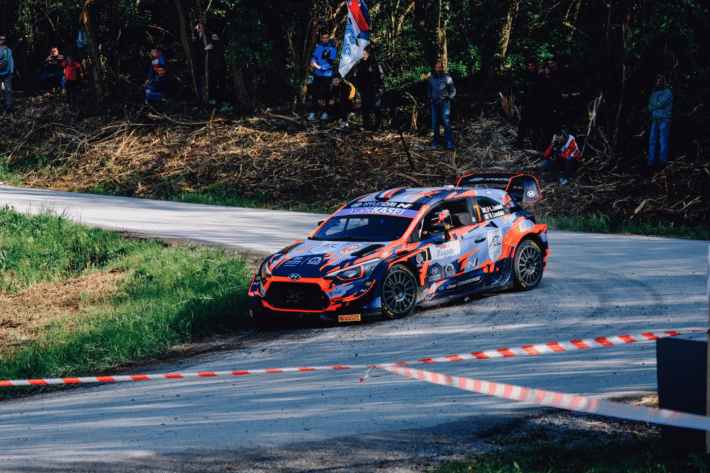Speed, power, and precision—all qualities that modern rally cars execute to perfection. These machines are built to conquer anything from gravel to snow. The technology in them is designed to exceed performance expectations. From turbocharged engines to AI-powered navigation systems, modern rally cars have changed the racing scene forever. But what makes modern rally cars so advanced? How do they handle world-class racing conditions? Let’s look closer at the engineering technology in these high-performance cars!
Turbo Power: The Heart of Speed
For rally cars, turbo power is everything! If you have driven a car at least a couple of times or followed rallies using sports betting with MelBet, you probably know this because it is one of the decisive factors that you should rely on when analyzing. Each modern rally car is built with a turbo engine so it can achieve maximum speed over any type of surface. Unlike normal cars, rally cars are equipped with anti-lag systems, which allow turbines to spin even without pressing the accelerator. This guarantees an immediate power supply when needed.
Take, for example, the Toyota GR Yaris Rally1. It has a 1.6L turbo engine capable of exceeding 500 horsepower when paired with its hybrid system. The turbo is also designed to survive extreme conditions, such as the icy Swedish roads and the scorching hot Kenyan sun. Current rally vehicles accelerate to 100 km/h in under 3 seconds—faster than a lot of supercars—thanks to modern-day fuel injection technology and swift spool times.
Smart Brakes: Precision in Every Turn
When rallying, braking is far more complex than just coming to a halt: it’s about maintaining control and shifting weight. Carbon-fiber-reinforced brake systems in modern rally cars are capable of enduring temperatures over 800 °C while still maintaining structure and performance.
With an advanced hydraulic handbrake system, the Ford Puma Rally1 lets drivers lock the rear wheels instantaneously to enable tighter hairpin turns. At the same time, EBD, or electronic brake distribution, ensures all four wheels are optimally powered for braking, adjusting based on terrain and speed in real-time. Without ABS, rally drivers must rely on pedal feel, hydraulic modulation, and skill to slide through corners.
AI Co-Drivers: The Future of Navigation
Rally racing involves more than just speed—it requires attention to precision and placement of the car. Human co-drivers still call the pace notes, but technology is changing the face of rally navigation with real-time data processing. That innovation can be seen in:
Humans and machines work together to make predictions more accurate and enhance the experience of rally racing!
Aerodynamics: Slicing Through Air
Rally cars do not only battle the road; they battle the air as well! Modern technology in the form of aerodynamics assists in creating downforce for grip and stability, particularly at high speeds.
Take a look at the Hyundai i20 N Rally1, which has an aggressive rear wing, cyclone producers, and air splitters that help channel airflow at maximum speed without losing acceleration. Sophisticated wind tunnel testing has led to designs that decrease drag by 15%, helping vehicles maintain stability while jumping 1 meter in the air! With precision aerodynamics like these, rally cars can maneuver through any kind of off-road terrain like a missile on wheels.
Hybrid Boost: More Speed, Less Fuel
With the arrival of the Rally1 Hybrid Era, the method by which power is generated for rally cars is being transformed permanently. These modern machines are fitted with internal combustion engines and 100 kW electric motors capable of providing an instantaneous boost of over 130 horsepower whenever it is required.
This hybrid system is currently being used in the Ford Puma Rally1, Toyota GR Yaris Rally1, and Hyundai i20 N Rally1. It helps to improve the overall performance of the vehicles while reducing fuel consumption. The additional power can also be utilized at key power-critical moments, such as at the exit of tight corners and during acceleration on long straights. The regenerative braking systems help to recover energy loss, proving that speed and environmental factors do not have to be in conflict with each other.
Suspension Magic: Mastering Any Terrain
A rally car’s suspension is arguably its most advanced component, as it strives to mitigate the excessive shocks it encounters while trying to keep steady. Engineers put adaptive dampers and long-travel suspension systems in place to deal with jumps, potholes, and rough surfaces. This is their approach:
- Adjustable dampers: With shock dampers, rough gripping surfaces can be traversed due to the real-time adjustments made.
- Independent wheel travel: Each of the wheels pivots individually for complete surface coverage.
- Reinforced underbody protection: Essential body parts are defended from stones and other debris by strong skid plates.
- Hydraulic ride-height control: The car can lower or lift itself depending on the terrain.
With these features, advanced modern rally cars are able to float over gravel, glide through mud, and surpass the competition on every terrain—all in a single event!
Data-Driven Racing: Every Millisecond Counts
Rally teams don’t solely depend on the driver’s capabilities; they track data in real-time to enhance performance. Every sensor, telemetry feed, and onboard camera reveals information that can reduce the time for each stage by fractions of a second.
The vehicles undergo comprehensive evaluation with regard to turbo pressure adjustments, tire temperature, and more. Nowadays, champions, as well as the rest of the competitors, are separated by milliseconds in the world of rallying. With the kind of technology we have today, one thing is very clear: the future of rally racing is now!


